Diversity and inclusion (D&I) are now central to workplace conversations, but for many jobseekers and employees, it’s still difficult to tell whether an organisation’s commitment to equity goes beyond surface-level promises.
In tech especially, where women and minority groups remain underrepresented, it’s more important than ever to make sure your employer is creating an environment where everyone can thrive.
So how do you cut through the corporate jargon and figure out if an employer is genuinely inclusive?
Whether you’re navigating interviews or already part of a team, this guide will walk you through 10 strategic questions to ask – designed to uncover the reality behind a company’s D&I messaging. We’ll also explain why each question matters and what kind of answers you should look for.
Why asking about D&I matters, at any stage
We know the value of diversity in tech: it sparks innovation, boosts problem-solving, and leads to better products. But for individuals, inclusion means more than strategy: it’s about feeling safe, respected, and empowered at work.
Research consistently shows that women, people of colour, LGBTQ+ professionals and those with disabilities still face barriers in the workplace, from unconscious bias and microaggressions to unequal pay and promotion prospects.
That’s why asking questions about D&I isn’t just a ‘nice-to-have’, it’s a powerful way to advocate for yourself and set the tone for the working environment you deserve.
When to ask: interviews vs employment
You can approach these conversations at two key stages:
- During a job interview, to understand what kind of culture you’re potentially joining.
- After being hired, to explore what support systems, initiatives, or opportunities are available internally.
Let’s break down the best questions to ask in each setting, and why they matter.
Questions to ask during an interview
You’re not just being interviewed, you’re interviewing the company, too. Asking thoughtful questions about diversity and inclusion shows that you care about working in a respectful, values-driven environment. It also helps you identify red flags before it’s too late.
1. Can you tell me about your company’s diversity and inclusion strategy?
Why ask: This question invites the interviewer to talk about formal commitments and overall vision. Listen for whether they mention specific goals, frameworks, or leaders responsible for D&I.
What to look for: An employer who’s serious about D&I will have a clear plan with measurable outcomes, not just a vague nod to “valuing diversity.”

2. What steps has the company taken to build a more inclusive culture?
Why ask: Inclusion isn’t just about who gets hired – it’s about what happens after. This question uncovers initiatives such as inclusive onboarding, cultural awareness training, or allyship programmes.
What to look for: Look for evidence of action – especially ongoing, long-term commitments that go beyond one-off events or ‘awareness months.’
3. What does your leadership team look like in terms of diversity?
Why ask: Diverse leadership is a strong sign that an organisation doesn’t just hire inclusively at junior levels but supports progression for all.
What to look for: Honest answers, especially if there’s room to grow. Some organisations may acknowledge they’re not where they want to be but are taking real steps forward.
4. How do you ensure diversity in your hiring process?
Why ask: This helps you understand how systemic biases are addressed at the recruitment stage.
What to look for: Examples might include inclusive job descriptions, blind CV screening, diverse hiring panels, or partnerships with community-focused organisations.
5. Can you share an example of how the company has responded to employee feedback on inclusion?
Why ask: Inclusion is a journey, and feedback plays a big role. This question gets to the heart of whether a company listens to its people and acts on what they say.
What to look for: Specific stories of change, such as policy updates, improved parental leave, or the launch of new inclusion networks in response to feedback.
Questions to ask once you’ve joined
If you’re already in the role, you’re in a strong position to assess the reality of your workplace culture. Here are five questions to keep the momentum going and ensure your employer continues to prioritise inclusivity.
6. What employee resource groups (ERGs) are available, and how can I get involved?
Why ask: ERGs offer community and support. They also provide valuable insight into what matters most to employees.
What to look for: A range of active, well-supported ERGs with opportunities to contribute. Groups for women, LGBTQ+ staff, ethnic minorities, neurodiverse individuals, and carers are common in inclusive workplaces.

7. Are there any mentorship or sponsorship programmes specifically for underrepresented groups?
Why ask: Mentorship can be a game-changer in helping women and minority groups navigate challenges and grow professionally.
What to look for: Structured programmes with clear outcomes. Even better if senior leaders are involved and committed to creating opportunities for diverse talent.
8. How is inclusion measured here and how often are results shared with the wider team?
Why ask: What gets measured gets managed. This question helps you find out whether your employer is tracking inclusion meaningfully.
What to look for: Regular employee surveys, published pay gap reports, or inclusion KPIs tied to performance reviews and leadership accountability.
9. How do you ensure diverse voices are heard in meetings or decision-making processes?
Why ask: Day-to-day culture matters just as much as big-picture strategy. This question uncovers how inclusion plays out in practice.
What to look for: Actions like rotating who leads meetings, feedback channels, or psychological safety training to reduce interruptions or dismissive behaviour.
10. What kind of support is available for career development, particularly for women in tech?
Why ask: In a fast-moving field like tech, access to training, stretch opportunities and sponsorship can make or break your growth.
What to look for: Career development plans, internal mobility opportunities, access to leadership programmes or external conferences, especially those aimed at supporting underrepresented groups.
Bonus tip: watch for red flags
In both interviews and workplace conversations, keep an ear out for:
- Vague answers with no real examples
- Over-reliance on branding or awards with no internal follow-through
- Defensiveness when discussing gaps or challenges
- Lack of accountability, such as “HR handles that” rather than company-wide ownership
Remember: asking these questions isn’t confrontational. It’s part of being an engaged, thoughtful professional who wants to work in an equitable space.
Final thoughts: inclusion is everyone’s business
The tech industry still has a long way to go when it comes to building truly inclusive environments. But by asking smart questions, you not only protect your own wellbeing and growth, you also help move the conversation forward.
Employers who are genuinely committed to inclusion won’t be put off by your curiosity. On the contrary, they’ll welcome it. Because the best workplaces aren’t afraid of being held accountable. They embrace it.
So ask confidently, listen carefully, and remember: you deserve a workplace where you don’t just fit in, you belong.




